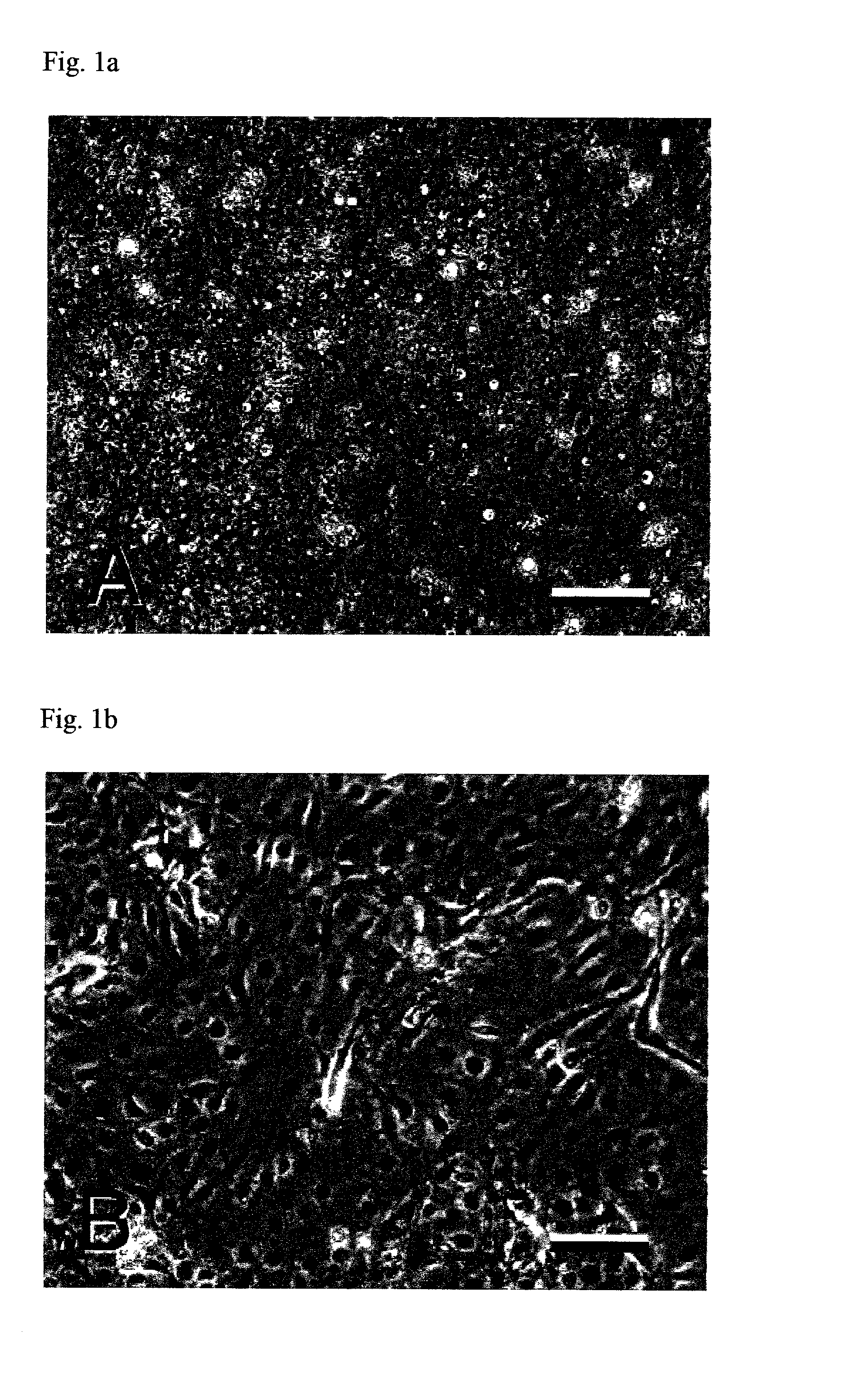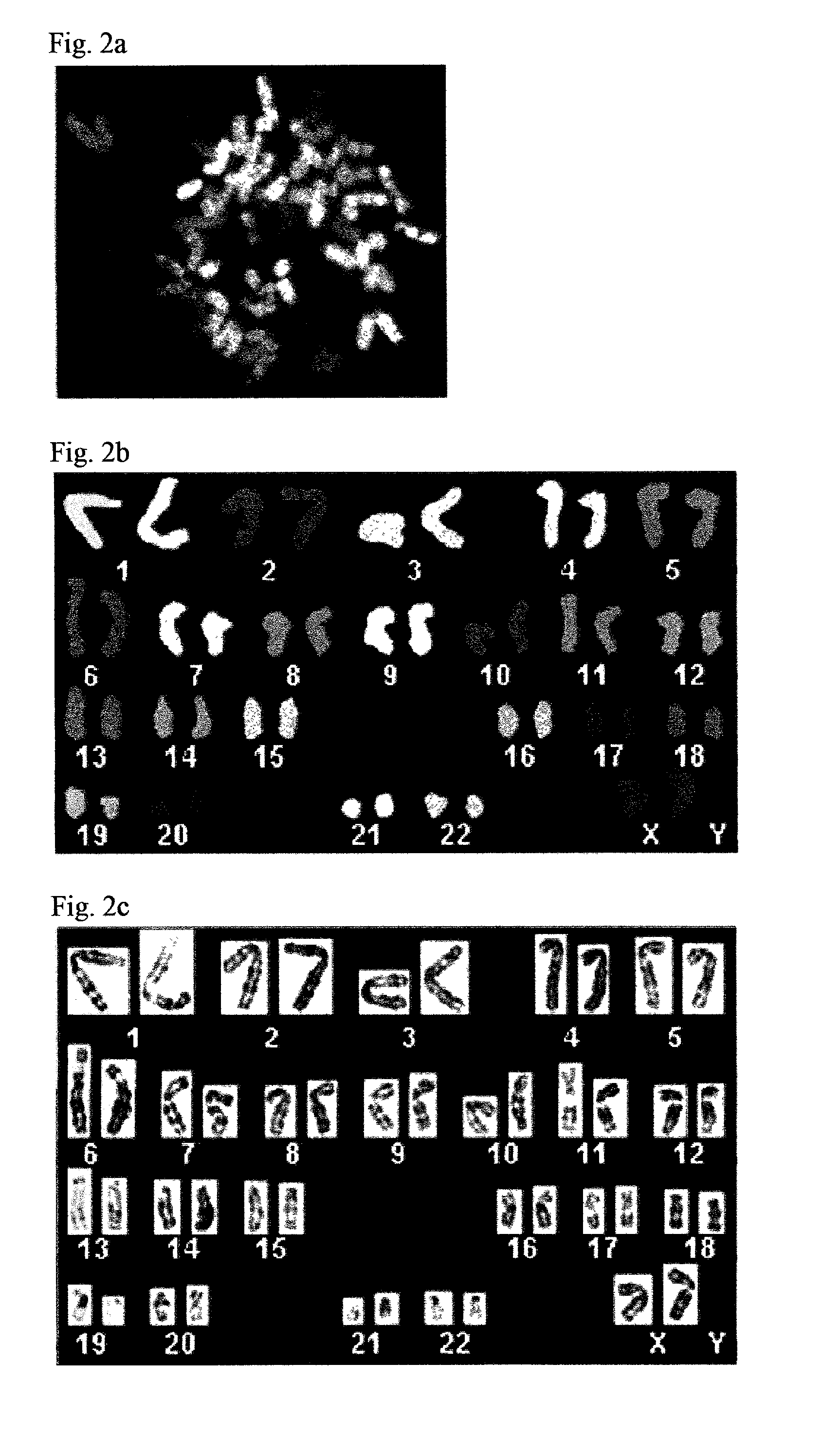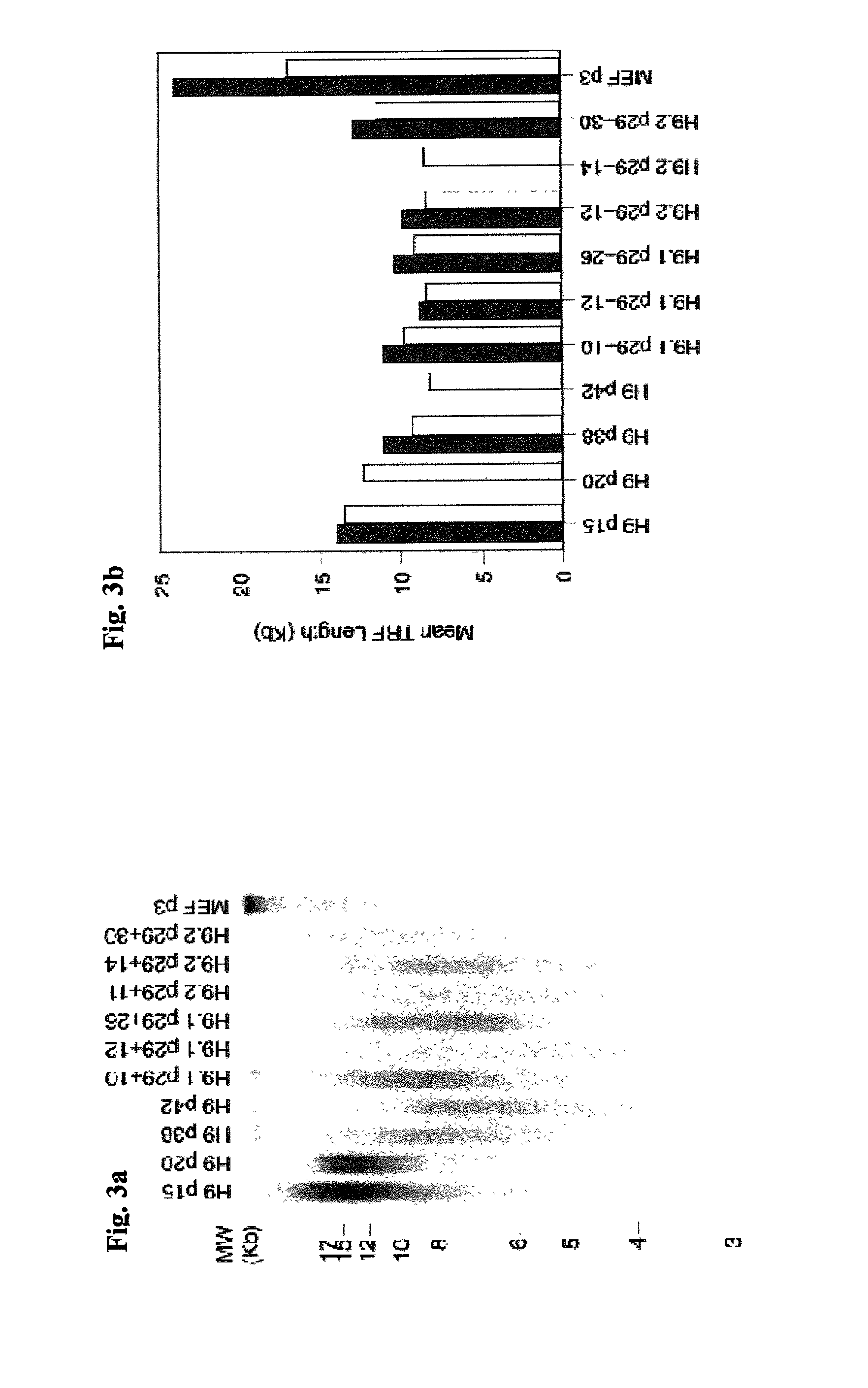Clonal human embryonic stem cell lines and methods of generating same
a human embryo technology, applied in the field of human embryonic stem cell lines, can solve the problems of significant obstacles to the practical exploitation of human embryonic stem cells, the underlying mechanisms controlling the development decisions of early human embryonic development remain essentially unexplored, and the use of non-human cells severely limits their application towards human therapy or biological modeling
- Summary
- Abstract
- Description
- Claims
- Application Information
AI Technical Summary
Problems solved by technology
Method used
Image
Examples
example 1
Establishment of Clonal Human ESC Lines Sustaining a Normal ESC Phenotype Following Long Term Culture
[0070] The provision and manipulation of human ESC promises to yield major biomedical, industrial and scientific advances. Culturing ESC in vitro has been attempted in the prior art as a means to provide a convenient source of such cells. These approaches, however, have failed to provide clonal human ESC lines displaying a normal ESC phenotype following long term culture. This represents a serious drawback since the optimal use of human ESC for scientific and therapeutic applications critically depends on the ability to generate clonal human ESC lines displaying normal ESC proliferative capacity, a euploid karyotype and an unrestricted developmental potential following long-term culture. Therefore, while reducing the present invention to practice, ESO lines fulfilling such criteria were generated, as described below and as described in Amit, M. et al., Developmental Biology 227, 271-...
PUM
 Login to View More
Login to View More Abstract
Description
Claims
Application Information
 Login to View More
Login to View More - R&D
- Intellectual Property
- Life Sciences
- Materials
- Tech Scout
- Unparalleled Data Quality
- Higher Quality Content
- 60% Fewer Hallucinations
Browse by: Latest US Patents, China's latest patents, Technical Efficacy Thesaurus, Application Domain, Technology Topic, Popular Technical Reports.
© 2025 PatSnap. All rights reserved.Legal|Privacy policy|Modern Slavery Act Transparency Statement|Sitemap|About US| Contact US: help@patsnap.com



